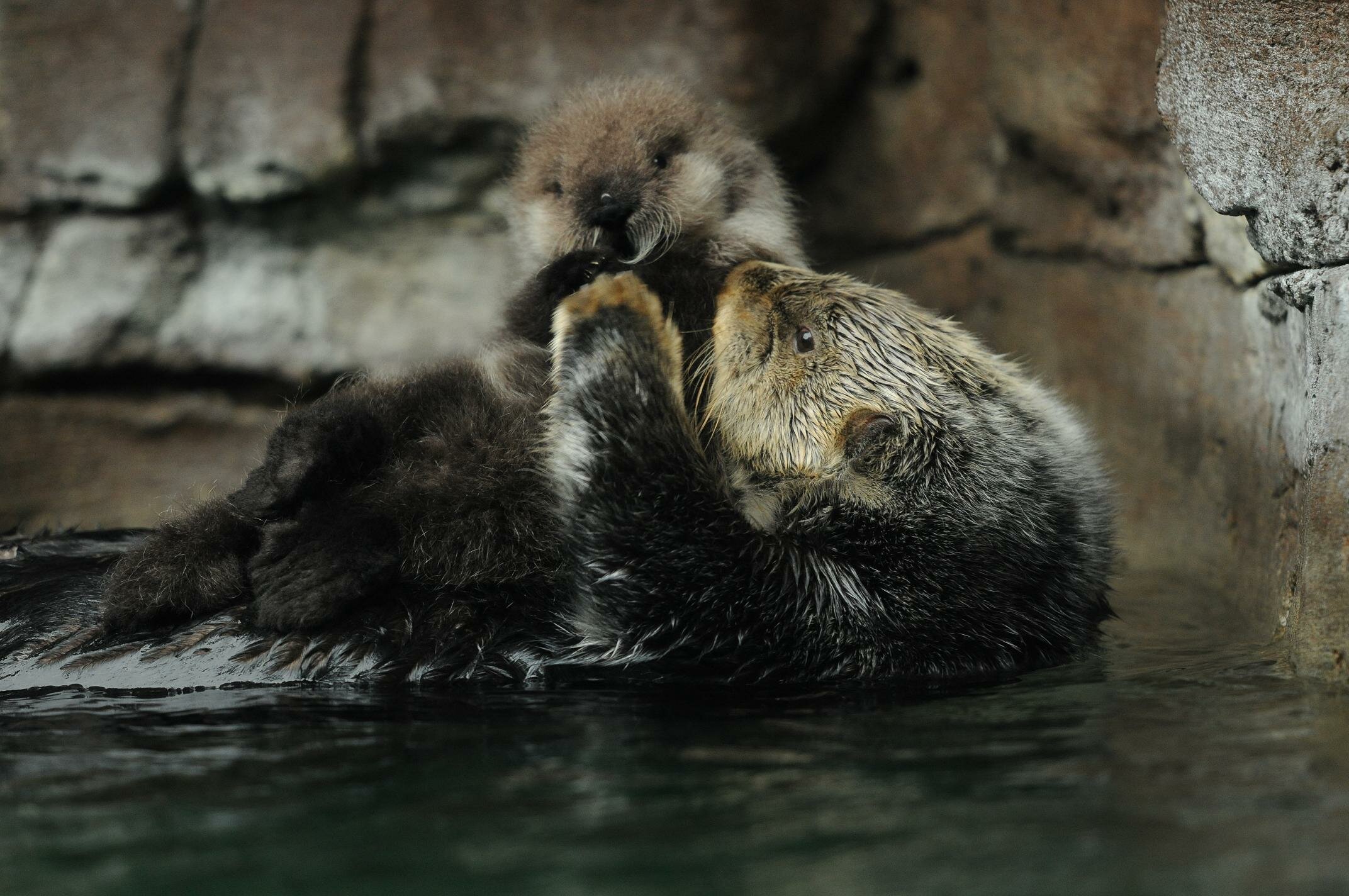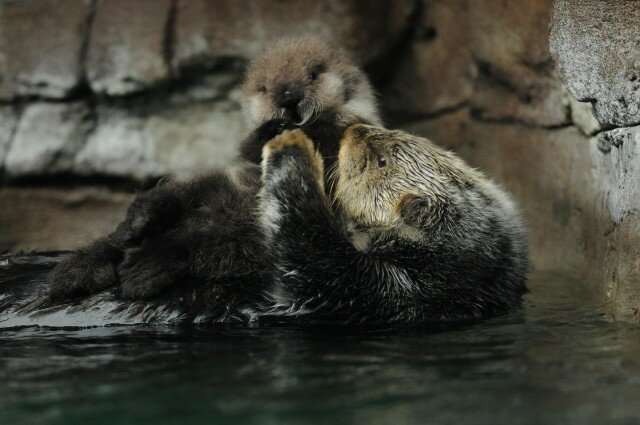Nine months in the making, the new harbor seal exhibit at Seattle Aquarium delivers on all that was promised — visitors of any height can come nose-to-nose with the Aquarium’s three harbor seals, Barney, Q, and Siku, from indoor and outdoor viewing stations. Barney is the eldest, at 28 years of age, and still spry. The other male, Q, is 14, while the female Siku, at 8, is breeding age. The Aquarium, without being a noodge about it, is hoping some hot seal-on-seal action will generate pups at some point.
The outdoor area, with seating for 100 that faces the harbor seals’ tanks, also offers an incredible view of Puget Sound. Out there, in the wild, harbor seals are the most populous marine mammal. If the salmon is our iconic fish, the harbor seal, which stays in the Sound year-round, must be the iconic marine mammal. The Aquarium devotes a lot of educational resources to the seals because beachcombers are so likely to run across them at some point: Every year, a few people still think they’ve found an “abandoned” seal pup.
The exhibit’s first day open to the public is June 1, 2013, when the Aquarium will be open, as usual, from 9:30 a.m. to 5 p.m. Admission is $19.95 for adults, $13.95 for kids 4 to 12. (3 and under? Free.) Anyone who’s been before will notice that the new tanks are deeper, 6 feet now, allowing the seals the chance to dive more, and viewers to watch them as they zip around underwater. The seals have better “rocks” to haul out on, and their open-air enclosure is bounded by see-through acrylic panels. (Steel pilings and concrete walkways have replaced the creosote-laden pilings and timbers.)
For further excitement, feedings for the marine mammals take place daily at 11:30 a.m., 2 p.m., and 5 p.m. (In the wild, they eat everything from sole, flounder, herring, and cod, to octopus and squid. At the Aquarium, they get restaurant-grade fish.)
The renovated exhibit cost $6.5 million, with $3.5 million coming from the City of Seattle and private donors supplying the remaining $3 million. This is on top of a larger $22-million renovation of the main Aquarium building.




